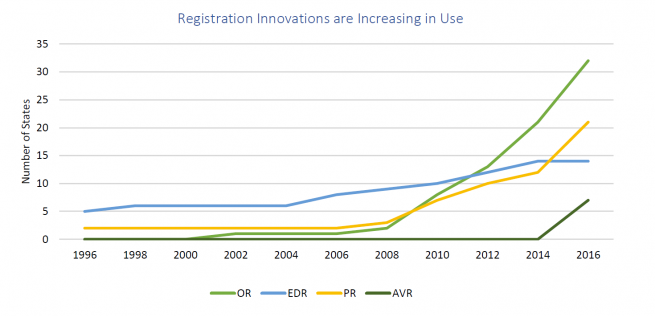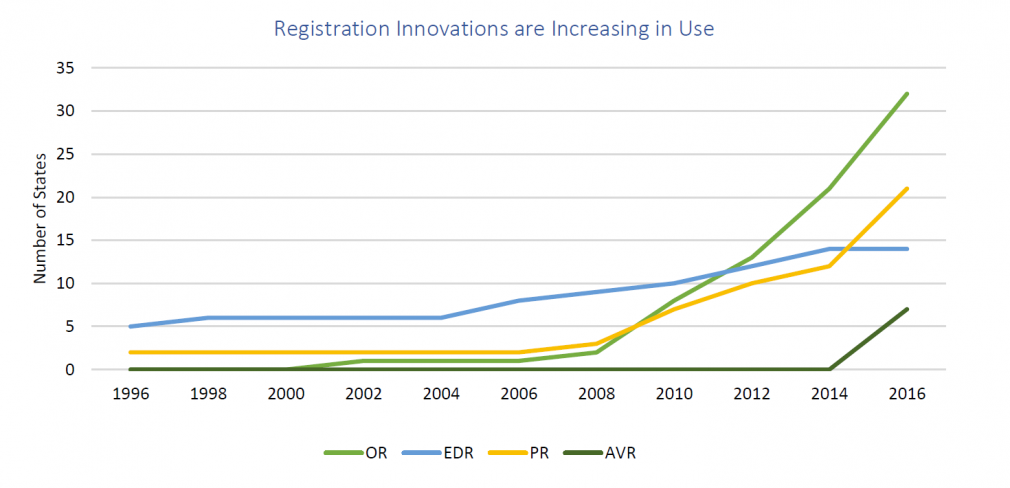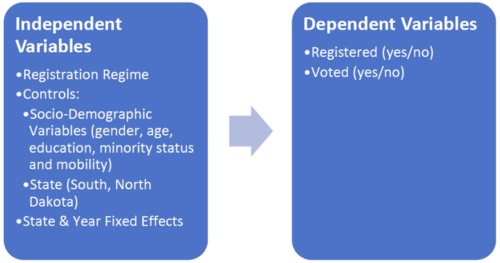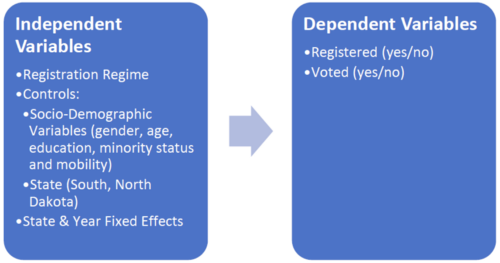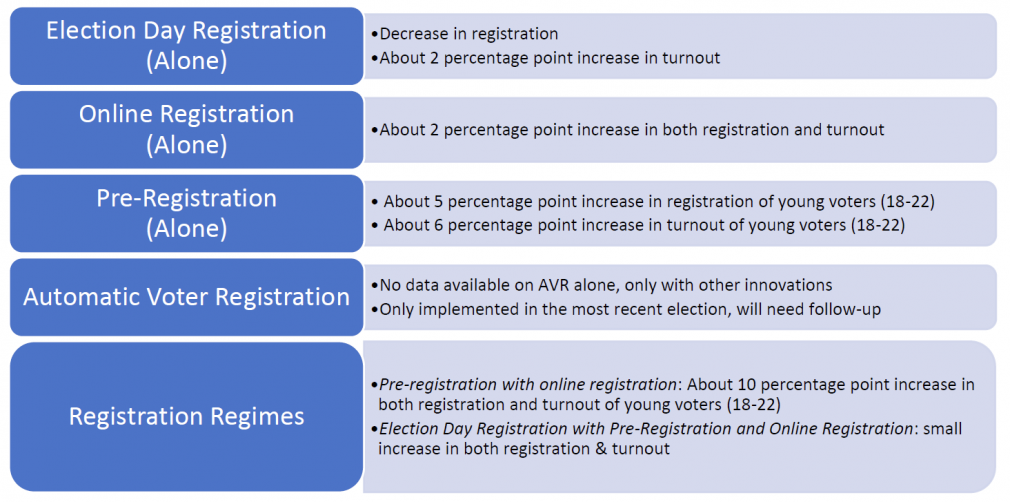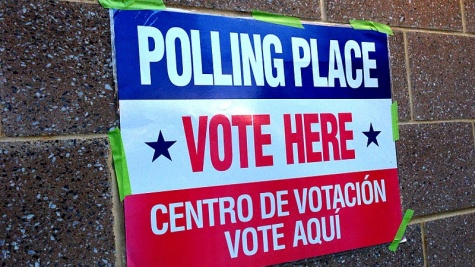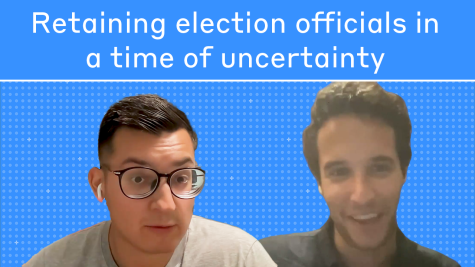Registration Innovation
The Impact of State Laws on Voter Registration and Turnout
The MIT Election Data and Science Lab helps highlight new research and interesting ideas in election science, and is a proud co-sponsor of the Election Sciences, Reform, & Administration Conference (ESRA).
Holly Ann Garnett and Peter Miller recently presented a paper at the 2018 ESRA conference entitled, “Registration Innovation: The Impact of American Registration Regimes, 1996–2016.” Here, they summarize their analysis from that paper.
The Issue
The first step toward voting in most states is getting registered, but this can be a difficult and time-consuming task. There is paperwork to fill out, identification to provide, deadlines to meet, and forms to mail. In the face of these challenges, we pose an important question:
How can state election administrators make registration easier?
There are a few answers that come immediately to mind. For example, they can:
- Increase the time-frame during which voters can register
- Provide more convenient options for registration
- Improve list management and data-sharing among government bodies
In our paper, we consider four registration innovations:
- Election day registration
- Online registration
- Pre-registration of youth (registering them before they reach voting age)
- Automatic voter registration
We can see that overall, each of these innovations is increasing in use — you can see this clearly when they are mapped over time:
Beyond simply becoming more common, though, are these innovations effective at increasing voter registration and turnout?
In examining this question, our article:
- Updates analysis from 1996 (the first election following the National Voter Registration Act) to the most recent election (2016);
- Studies regimes (that is, combinations of the four registration innovations), not just individual innovations; and,
- Considers the impact on both registration and turnout.
Method
Conclusions
- Registration innovations can increase registration and turnout rates
- Election day registration may decrease registration rates, but can nonetheless increase turnout
- The combination of online registration and pre-registration of youth can have sizable impacts on youth registration and turnout
- Administrators and scholars must be careful in evaluating the impact testing one innovation alone, or one election year
